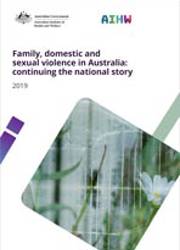ABS Criminal Courts – Australia (CCA), 2017-18
First year: 1995
Latest year: 2017–18
Frequency: Yearly
Year in this publication: 2017–18
Size: State and territory criminal courts finalised 592,455 defendants in 2017–18
Methodology: Administrative dataset
Geography: National, state/territory
Purpose/description
The ABS Criminal Courts, Australia presents information on the characteristics of defendants finalised by Australian state and territory criminal courts. This includes information on the offences, case outcomes and sentences associated with those defendants.
Scope and coverage
This publication presents information about defendants who were finalised in the criminal jurisdictions of the Higher, Magistrates’ and Children’s Courts across Australia’s states and territories during the reference period. A finalised defendant is one for whom all charges have been formally completed so that they cease to be an item of work to be dealt with by the court. The experimental family, domestic and sexual violence (FDSV) data include the following ANZSOC offence types:
- 01 Homicide and related offences (011 Murder, 012 Attempted murder, 013 Manslaughter and driving cause of death)
- 02 Acts intended to cause injury (021 Assault and 029 Other acts intended to cause injury)
- 03 Sexual assault and related offences (031 Sexual assault and 032 Non-assaultive sexual offences)
- 049 Other dangerous or negligent acts endangering persons
- 05 Abduction / harassment (051 Abduction and kidnapping, 052 Deprivation of liberty, 053 Harassment and threatening behaviour)
- 121 Property damage
- 1531 Breach of violence order.
Given the differences in how FDSV offences are identified or defined (as described below), direct comparisons of the state/territory FDSV data presented in the Criminal Courts publication should not be made.
Experimental data relating to family and domestic violence defendants are available for all states and territories except South Australia.
FDSV definitions
The FDSV data published in the ABS Criminal Courts collection are based on information recorded in the state and territory court administrative systems. FDSV offences are identified based on an indicator (or ‘flag’) that is recorded by either the police and/or courts, as follows:
In Victoria, Western Australia, the Northern Territory and Tasmania, police officers flag FDSV offences, following investigating/charging, on their crime recording systems, and this is transferred through to courts administrative systems.
In New South Wales and Queensland, FDV offences are identified based on FDSV-specific legislation and are flagged either by police or when the matter is dealt with by the court. The related legislation includes:
- In New South Wales: Crimes (Domestic and Personal Violence) Act 2007 (NSW)
- In Queensland:
- s47 (9) of the Justices Act 1886 (for charges lodged in the Magistrates’ Courts)
- s564 (3A) of the Criminal Code Act 1899 (for indictments lodged in the Supreme and District Court)
- Domestic and Family Violence Protection Act 2012
- Criminal Law (Domestic Violence) Amendment Act 2016.
In the Australian Capital Territory, FDSV offences are identified and flagged either by police (following investigation/charging), or where the court list hearing type is ‘Family Violence’ (FV).
Given these differences in how FDSV offences are identified or defined, direct comparisons of the state/territory FDSV data presented should not be made.
For more information, please visit ABS Criminal Courts, 2017–18 cat. No. 4513 Explanatory notes.



